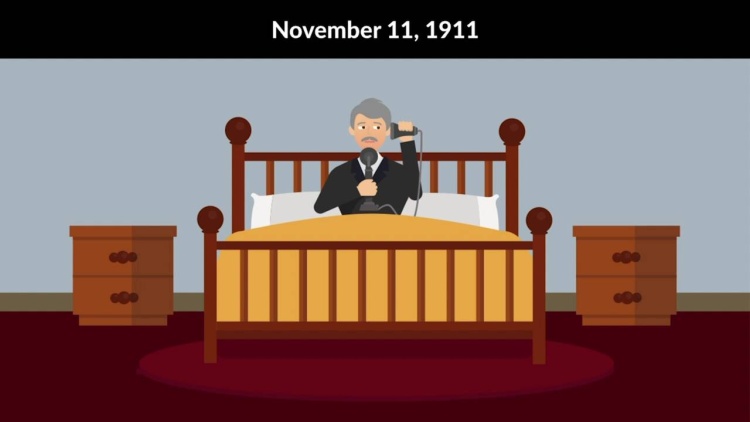Varney v. Ditmars
Court of Appeals of New York
111 N.E. 822, 217 N.Y. 223 (1916)
- Written by Megan Petersen, JD
Facts
In October 1910, Ditmars (defendant), an architect, hired Varney (plaintiff), an architect and draftsmen, at a rate of $35.00 per week. On February 1, 1911, Varney and another designer talked with Ditmars about their employment. Ditmars agreed to pay Varney and the designer an extra $5.00 per week if they would continue working for him and would complete certain projects that had been sitting in his office for three years. If Varney and the designer continued working this way, Ditmars said that on January 1, 1912, he would close his books and give them a “fair share” of his profits. Varney continued working in a favorable manner to Ditmars, and was paid $40 per week. On November 6, 1911, Ditmars told Varney he wished him to come into work the following day, Election Day. Varney replied that he did not wish to work that day, but to stay home and attend a local election. Varney did not come into the office on November 7, 1911. On that day, Varney became ill, and remained ill and unable to work until around December 1, 1911. On November 11, 1911, Ditmars sent a letter to Varney saying he was upset that Varney did not come to work as requested on Election Day, and that because of his absence and disobedience, he was being discharged from employment with Ditmars. After Varney recovered, he went back to Ditmars’s office and requested to begin work again according to the agreement made with Ditmars on February 1, 1911. Ditmars said that there was no agreement, and refused to allow Varney to continue working for him. Varney brought suit against Ditmars in New York state court seeking to enforce the alleged February 1, 1911 agreement where Ditmars agreed to pay Varney a “fair share” of his profits. The trial court dismissed the case, and Varney appealed.
Rule of Law
Issue
Holding and Reasoning (Chase, J.)
Dissent (Cardozo, J.)
What to do next…
Here's why 899,000 law students have relied on our case briefs:
- Written by law professors and practitioners, not other law students. 47,000 briefs, keyed to 994 casebooks. Top-notch customer support.
- The right amount of information, includes the facts, issues, rule of law, holding and reasoning, and any concurrences and dissents.
- Access in your classes, works on your mobile and tablet. Massive library of related video lessons and high quality multiple-choice questions.
- Easy to use, uniform format for every case brief. Written in plain English, not in legalese. Our briefs summarize and simplify; they don’t just repeat the court’s language.





